Île des Pins
“You cannot come to La Nouvelle Caledonie without seeing Île des Pins,” Isabelle said. So we took a dual propeller plane for a short flight to the 15 km long Isle of Pines, an oasis of green in the blue of the pacific 100 km from Noumea. Lush vegetation covers the place, with massive banyan trees, coconut groves and banana palms but dominated by the pine trees Araucaria columnaris from which the island takes its name. Only 1500 people live here, mainly Melanesians who belong to one of 5 tribes living in small villages of traditional huts and wooden shacks. It is unspoilt, isolated, a place of natural abundance, a garden of Eden.

We stayed at one of two resorts on the island at Kanumera Bay. Its fine white sand is like flour, its water still, clear and impossibly blue. You need only go waste deep to snorkel among corals teeming with fish. Here we saw inquisitive purple fish that would swim up to us to look at us eye to eye, long thin transparent trumpet fish, and schools of what looked like sardines churning the surface of the water. I paddleboarded across the bay and green sea turtles swam leisurely below me in the deep green water. My son spent ages on the beach learning how to open coconuts and later we watched the sun set behind the pine trees as fishermen put their nets out into the stillness of the bay.
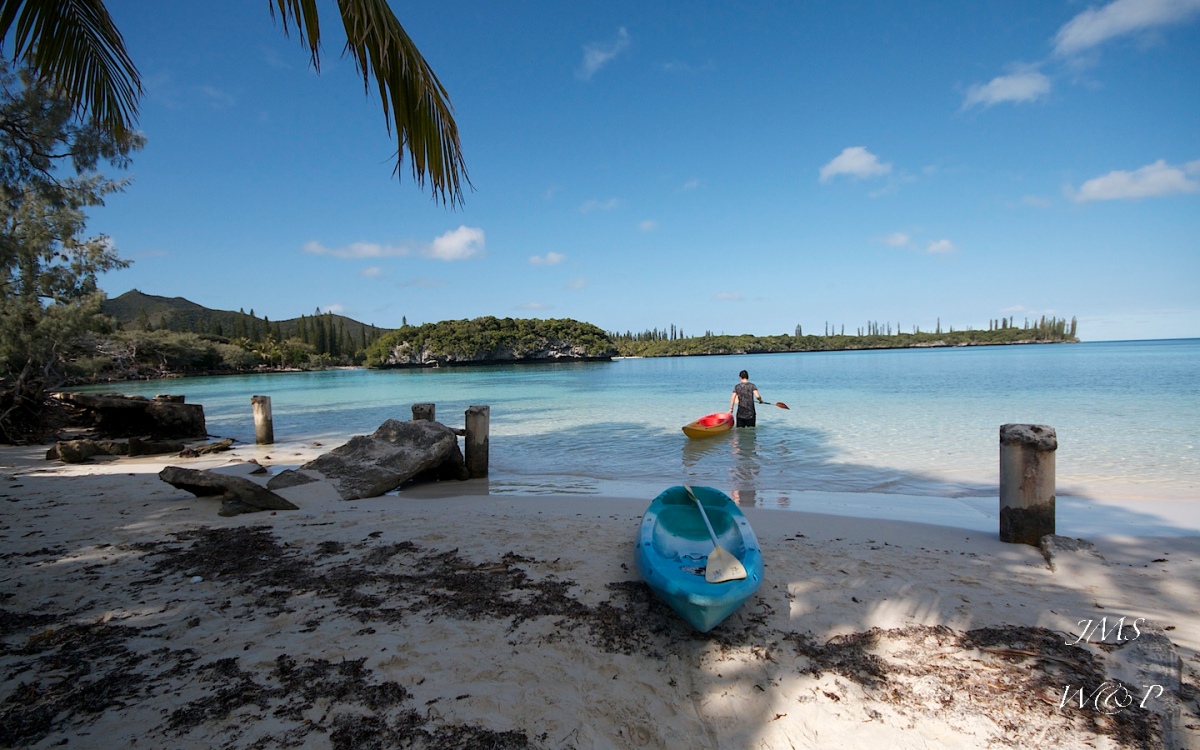
Les Pokens is the name New Caledonians have for Australians. Isabelle says it’s not pejorative, but I’m not so sure. They arrive in hoards by cruise ship and flood the towns and beaches. Many are sunburnt a bright pink. Some are drunk. They stand out from the sporty and elegant French Caledonians like sore thumbs. When I reserved our beach lounges at the resort, the beach attendant, said “Oui, oui, they are for you, not for the Australians” with a disparaging tone, nodding towards the line of people walking down the previously deserted beach. “But we are Australian.” I said. “Yes, but you are not them” he said. A Cruise Ship had arrived. 5000 people on board, almost 5 times the entire population of the island. Soon the bay was full of snorkelers and paddleboarders and groups sunbathing on the beach. A market had sprung up on the other side of the bay, near the dock where the cruise ship tenders were arriving. I took a kayak and canoed over there, beached it on a small strip of sand under a palm tree and went to look around. There were queues of boardshort wearing Aussies snaking back from Melanesian BBQ stalls, large local women selling coconut cake and tea and coffee, cheap souvenirs, t-shirts and sarongs. Melanesian music played from boom boxes. On the way back across the bay, I kayaked behind the bay’s sacred rock away from the crowded shallows. On the far side of the rock was a group of Melanesian kids jumping off the rock overhang into the water. I paddled nearer and was quickly surrounded by laughing children in the water, trying to climb into my kayak. I had to say no sternly as they threatened to tip me into the water with my camera gear, but they swam away, smiles all over their faces.

The contrast the next day was stark. With the cruise ship gone there was nobody there. My daughter and I walked along the beach, now stormy but still impossibly blue. Coconuts bobbed in the water where they had blown off trees during the night. Nobody at the dock, just a few dogs roaming. One of them accompanied us as we walked, until we found the general store a few kilometres down the road. We passed tethered cows and a few locals burning rubbish in their gardens, most raising their hand in greeting with a Bonjour.
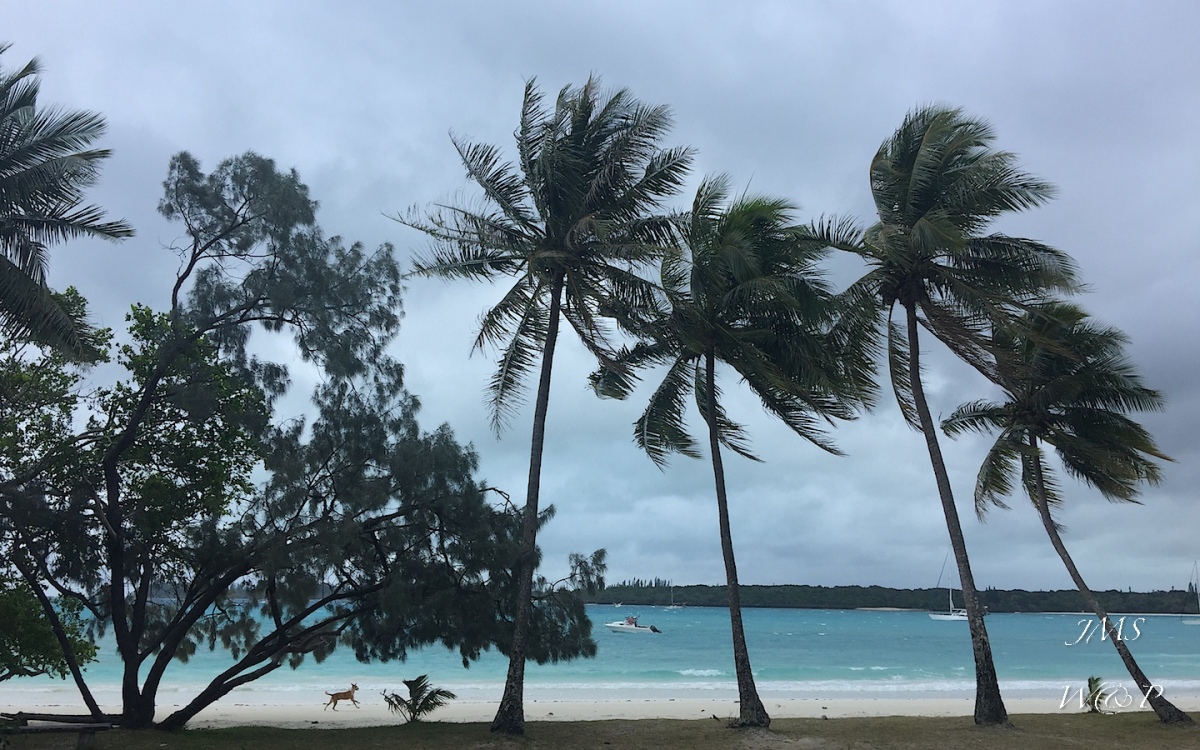
We hired bikes and rode to the old prison, where nature’s dominance is very much on display. There the crumbling ruins are overgrown with lianas and long grass, almost overtaken by the jungle. (The ruins are all that is left of the French penal colony, housing the Communards, deported political prisoners from the failed 1871 Paris Commune.) Then, we rode to Vao with its old church and mission buildings, and to the shores of Baie St Maurice where a monument to the Saint and his followers, the original 1848 missionaries, is surrounded by Kanak totems. (Given the earliest missionaries were cannibalized by the locals I’m not sure if the totems are there as symbols of threat or protection). Back at Kanumera Bay, I found a spot at the resort’s seafront bar and with my new friend, the stray dog from the morning at my feet, watched yet another breathtaking sunset.
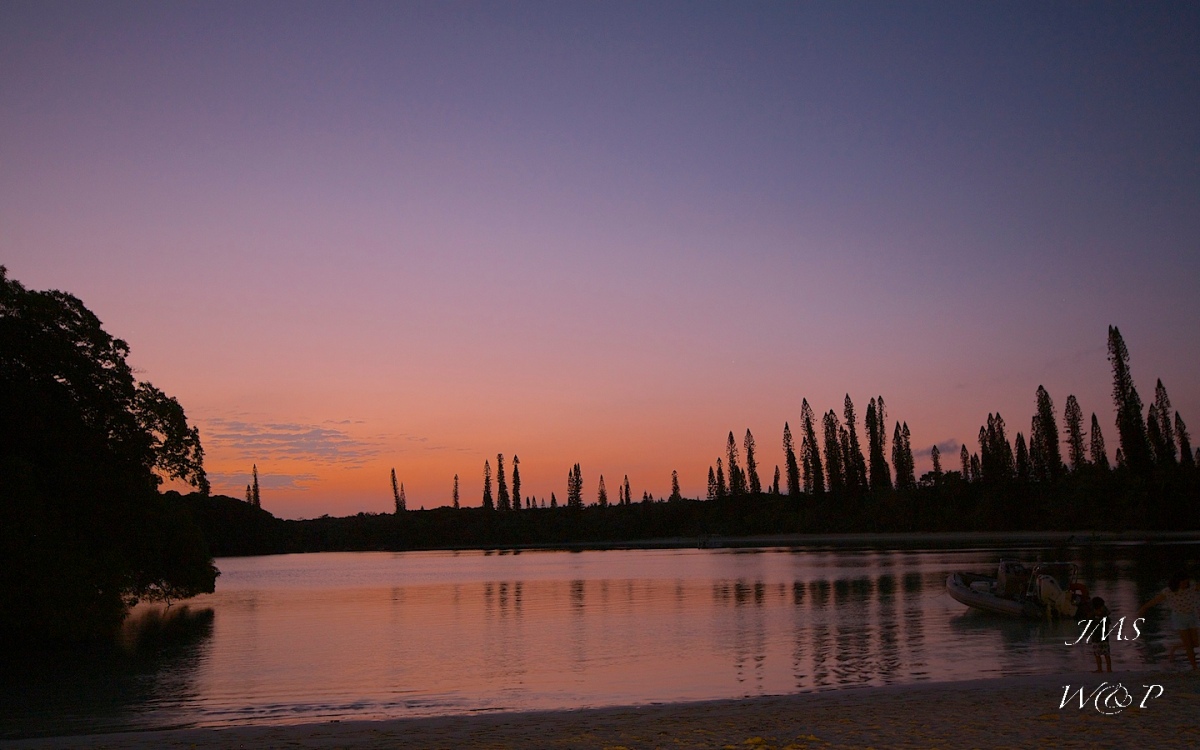
The weather was perfect for the highlight of our trip – the excursion by traditional pirogue through Upi Bay to the famous natural swimming pool. A mini bus dropped us by a tidal flat where we waded to clamber aboard the little sail boat. As we glided through the glass-like waters our guide, Bernard, spoke quietly to me in French. It had taken him 3 months to make this boat. He explained how he carved out the interior of the wooden hull, and how he now makes his living by taking tourists on these trips, and by fishing. About 200 people live in his tribe, at Vao, next to the beach where he keeps his boat. The tribe still carries on the traditional ways. He has never been to Noumea and French is his second language. His mother tongue is his tribal language. The other boatmen on the water are all from his tribe. They are his cousins and his friends. In high season, in August to October, there are not enough pirogues for all of the tourists wanting trips. As we spoke we passed many green sea turtles in the sheltered bay. After an hour or so we arrived at another tidal flat. Bernard indicated this was where we got off, and with vague directions to go straight ahead, left us alone on a deserted beach on the edge of a rain forest.
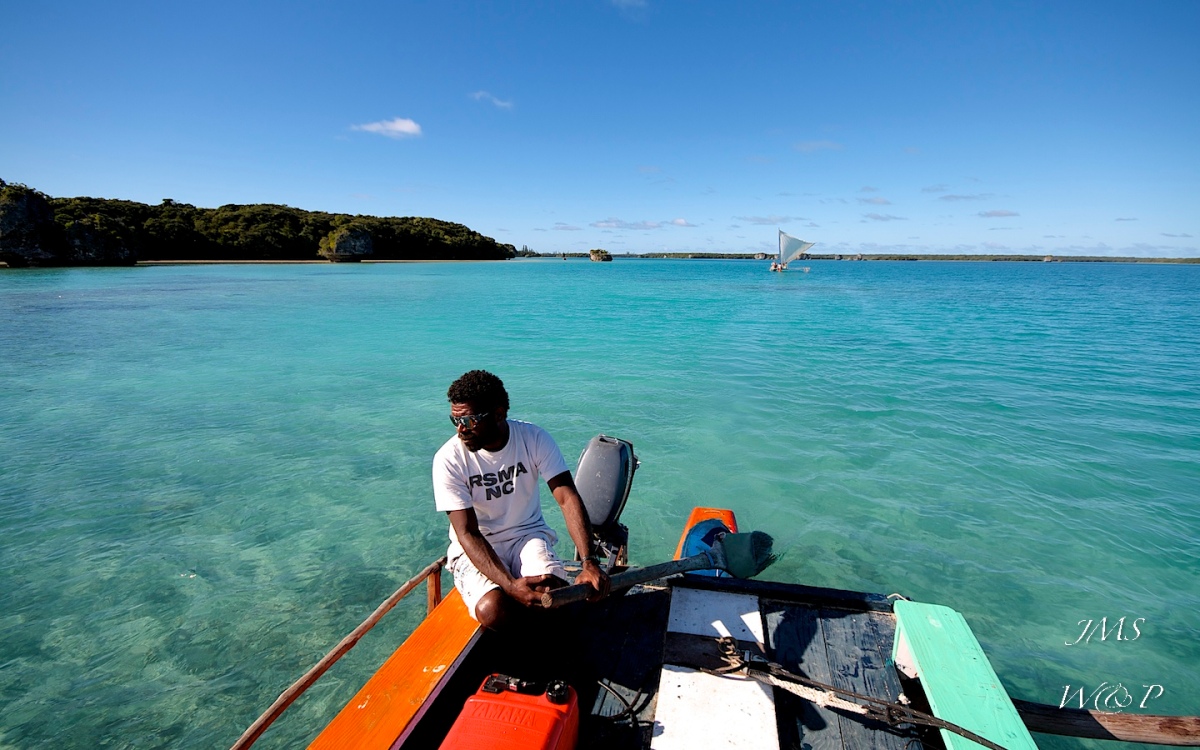
After a 45 minute walk along a jungle path (avoiding the tree roots growing across the track and the large hermit crabs) we emerged into a beautiful coconut grove which in turn gave way to another waterway which we waded across. We followed the waterway to the breathtaking natural swimming pool, a rock formation allowing the high tide in, but sheltering the pool from the ocean waves. The pool is fringed by Arucaria pines and the water is the most intense blue. It is full of fish and snorkelling here is like swimming in an aquarium.
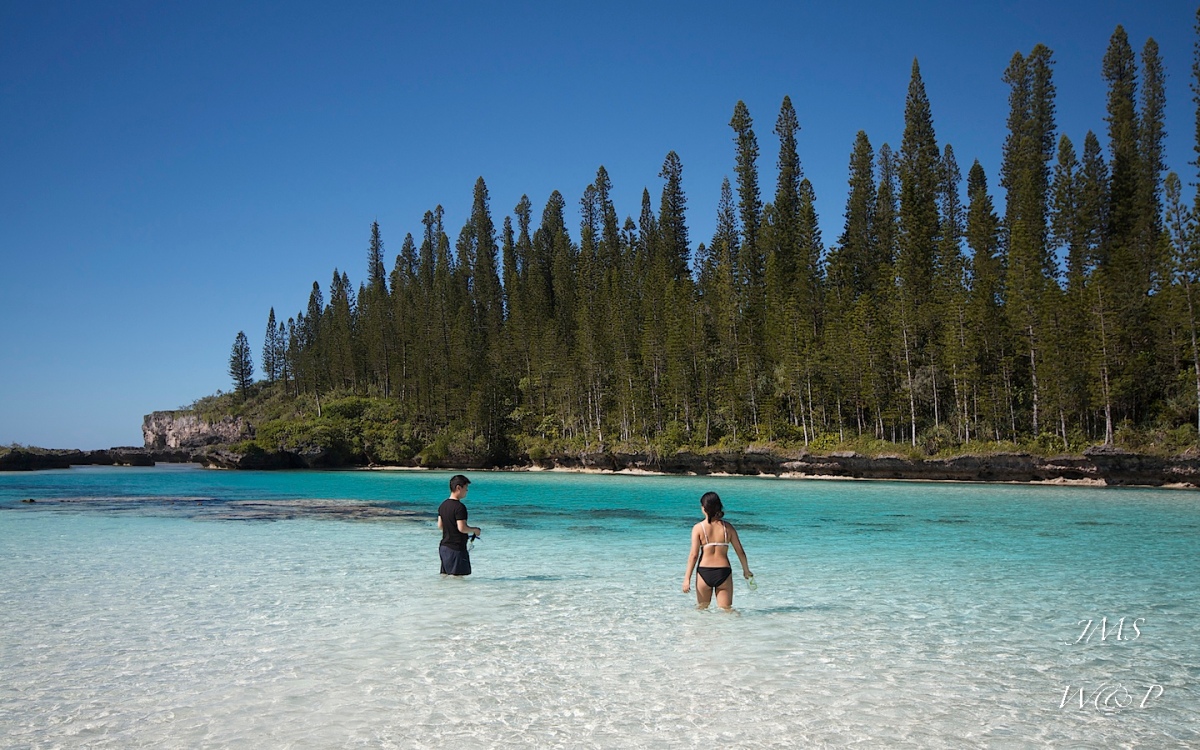
We stayed at the natural swimming pool until the tide started rising quickly and the beach began to disappear. Remembering our instructions we followed a dry inlet, the River of Sand, to Oro Bay, where we turned to follow the beach to the swanky Meridien Resort, where we were to meet our ride back to Kanumera Bay. Problem was the tide. It had risen so quickly that the beach ran out and we were forced to head inland, where we quickly became lost in the jungle. By some deserted huts, we came across an old Melanesian man whipper-snipping the undergrowth. I tried to get his attention but he studiously ignored me. We were forced to continue unaided. We followed a few tracks the wrong way until a narrow overgrown path became a vehicle track and this became a narrow dirt road which led us to the back of the Meriden. My kids argued the whole way about carrying the bag of snorkelling gear complaining about me getting them lost, that they hadn’t signed up for “Survivor”. But later, back at the resort, my daughter said “That was a great day”.
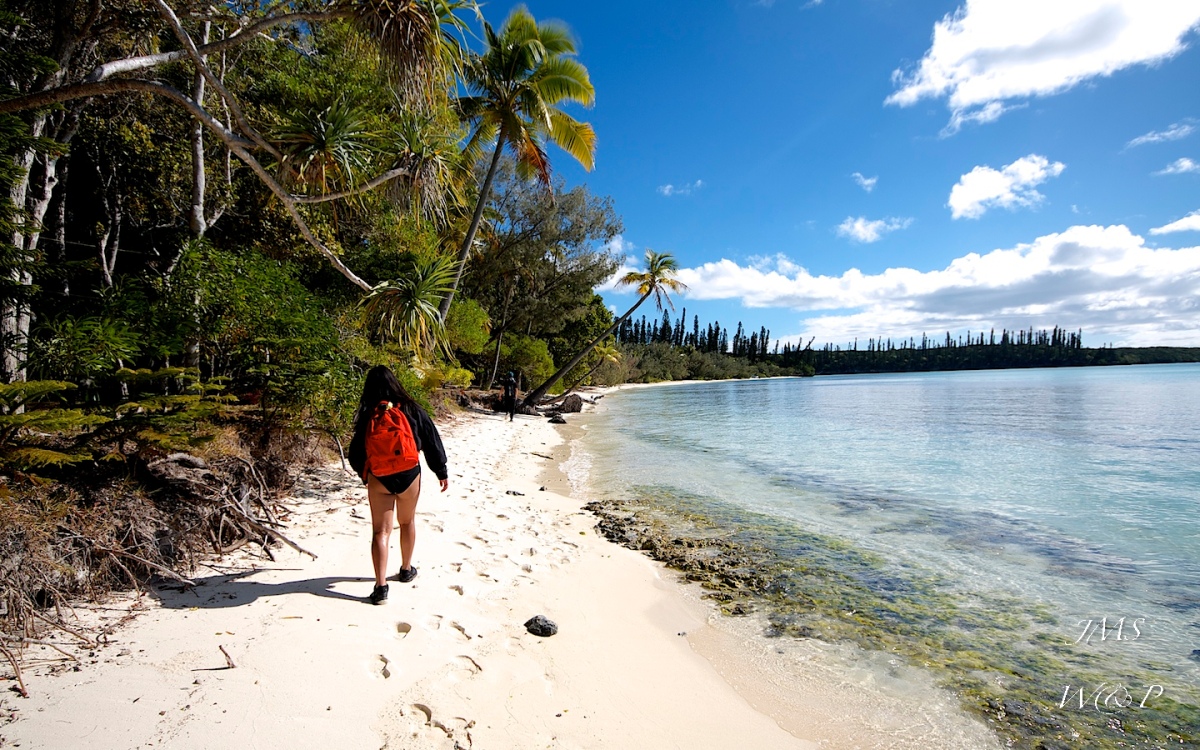
Noumea seemed like a metropolis after the undeveloped, wild and empty Île des Pins. Flying back in the dual propeller plane and seeing the white buildings sprawling along the coast through the hills it now felt like a city rather than the provincial town we saw when we first arrived. In those two weeks, I had spoken French solidly, drunk French wine, eaten French bread, cheese and pastries every day, swam at some of the most beautiful places in the pacific and spent time with dear friends. That’s my idea of a holiday. Better than France. La Nouvelle Calédonie, je t’aime.
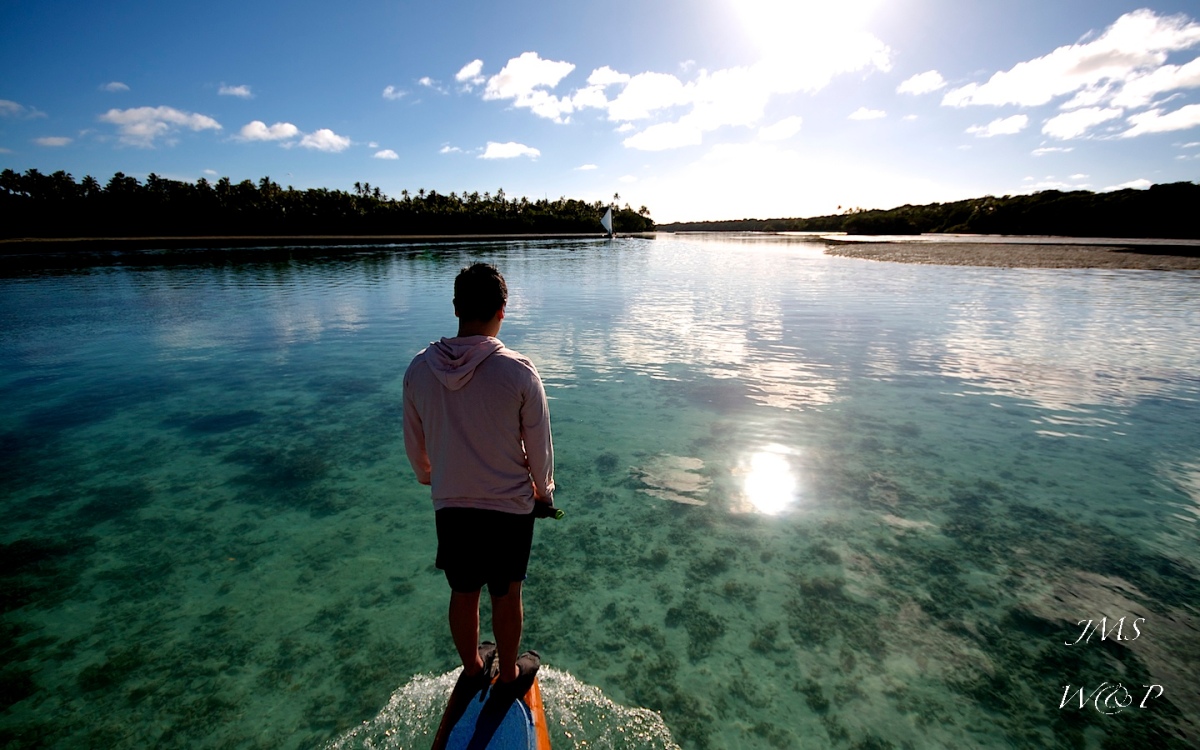

What a fabulous place! Thanks for your beautiful words and pictures. Cheers, Jenny.
LikeLiked by 1 person
Lovely prose Jill. A really great photos. Bloody cruise ships! You gotta love them and hate them at the same time.
LikeLiked by 1 person
I love your stories Jill it sounds like the place to go for a holiday tjanks for sharing
LikeLiked by 1 person